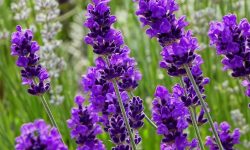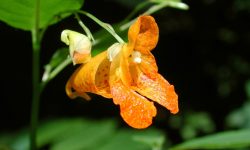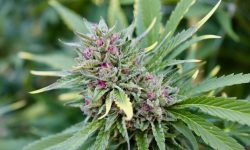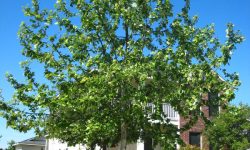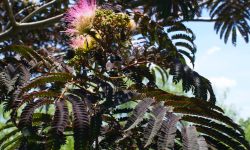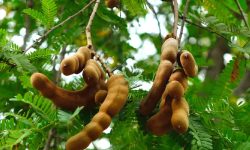The curry leaf tree, a botanical treasure with fragrant foliage and cultural significance, makes a unique addition to any garden.
In this article, we dive into the care and growth of this remarkable plant. From diverse varieties to effective propagation methods as well as harvesting and storage, explore the world of curry leaf trees to cultivate a companion in your garden.
About Curry Leaf Tree
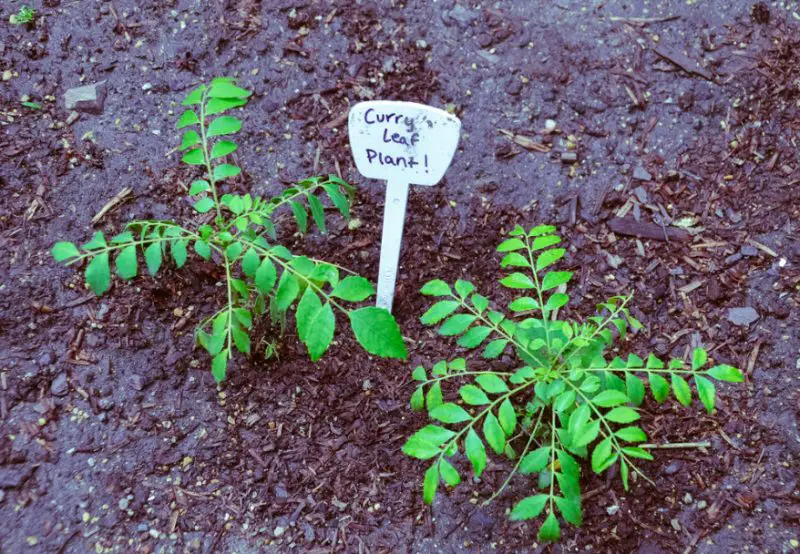
The Curry Leaf Tree, scientifically known as Murraya koenigii and belonging to the Rutaceae family, is a plant native to India. This fast-growing tree exhibits a compact, evergreen form, reaching heights ranging from six to 20 feet and spreading four to 12 feet wide. Its most renowned feature is the aromatic and spicy foliage composed of numerous pinnate leaves, arranged alternately along the stem. Harvesting these leaves when fresh is recommended to capture their best flavors.
In addition to its flavorful leaves, the Curry tree boasts fragrant white flowers that bloom during the spring, summer, and fall. These blooms eventually transform into small black fruits resembling berries. However, unlike the leaves, these fruits are not suitable for consumption.
The Curry tree, also known by various common names such as curry plant, sweet neem, meethi neem, and kadhi patta, is best suited for planting in the spring. It thrives in full sun exposure and well-drained, acidic soil. With a hardiness zone ranging from 9 to 12 (USDA), this tree finds its native habitat in Asia.
How to Grow and Care for the Curry Leaf Tree
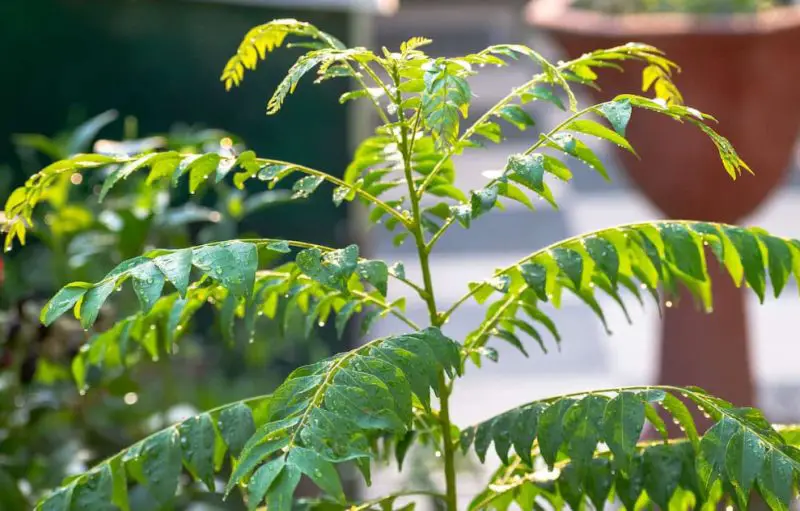
Carefully considering the environmental requirements of a Curry leaf tree is essential to its healthy growth. A healthy plant depends on the proper conditions, whether it is being grown in a container or the ground.
Pick a spot that receives full sun to partial shade for your outdoor gardening. If you live somewhere colder, make sure the plant gets plenty of sunshine by setting it in full sun. Still, it’s imperative that the curry tree be shielded from lows of less than 40°F. Young plants under a year old in particularly warm climates should be protected from direct sunlight if temperatures reach 100°F; alternatively, they should be placed in a partially shaded area.
Curry trees prefer soil that is loose, rich, well-draining, and has a pH of 5.6 to 6.0, which is somewhat acidic. Add sand to improve drainage in low-lying areas. When planting, working in some well-rotted manure or compost can help the plant take off quickly. Throughout the growing season, regular soil testing aids in determining the necessary amendments, with a particular emphasis on delivering enough nitrogen for leafy growth.
It’s crucial to fertilize your curry leaf tree. Add two tablespoons of 20 percent iron sulfate to the soil in the spring and/or fall, particularly if you notice yellowing leaves with dark green veins, which could be a sign of an iron deficiency. Every four to six weeks in the summer, established plants benefit from applying liquid fish fertilizer.
Water consistently, letting the soil’s surface almost completely dry between applications—at least once per week. Established plants may withstand semi-drought conditions, but in order to prevent root rot, excessive watering should be avoided.
Plants taller than two feet should be staked in windy situations. A stake that is at least one-third in the ground and two-thirds the height of the mature plant should be used. To prevent bending or breaking in heavy gusts, secure the plant with twine or staking tape.
A plant is most likely going into dormancy if low temperatures cause yellowing and leaf drop. In the spring, when temperatures rise, leaves will reappear; reduce irrigation to avoid root rot.
Although it is not necessary for plant health, pruning might increase yield. Pruning in the spring promotes bushier growth and limits size. Pinch off buds if you are harvesting leaves, but keep in mind that fruit and flowering take energy away from leaf growth.
Plants with curry leaves are self-fertile. One way to focus energy on the leaves is to prune off blossoms before they reach maturity. As they mature, container-grown plants require repotting in larger containers. During the growing season, fertilize them every six weeks using a fertilizer designed for containers.
Mini or dwarf plants are easier to handle if you intend to bring your plants indoors for the winter. After a period of indoor growth, gradually expose them to sunlight in the spring to prevent shock. Your Curry leaf tree will reward you with aromatic leaves and, if you’d like, fragrant blooms and fruits if you take good care of it.
Controlling Disease and Insects
Although the curry leaf tree is an easy plant to manage and is resilient to many commonly harmful pests and diseases, it is important to be aware of some potential challenges that need to be carefully monitored.
Aphids can be drawn to young curry leaf plants in particular. Aphids are tiny, wingless insects that can be yellow, brown, pink, gray, or green in color. These pests have the ability to spread illness in addition to draining the plant of its fluids. One easy fix for this is to give the afflicted plants a strong blast of cold water to knock the aphids loose. If that is not enough, the infestation can be successfully eradicated by dusting the plant with flour or putting neem oil on it once a week.
The spider mite is another possible pest; despite its small size, it can be easily identified by the webbing it leaves behind. The plant may develop yellowing and necrotic patches as a result of these arachnids. Initial remedies include introducing beneficial insects like ladybugs and lacewings or using cold water sprays for a week. Applying neem oil or insecticidal soap according to the manufacturer’s directions is required in cases of severe infestation.
Psyllids, similar to aphids and mites, feed on plant sap, leading to yellowing and eventual death of curry leaf plant leaves. Controlling their population can involve the use of beneficial insects, regular neem oil applications, or the application of diatomaceous earth. For stubborn infestations, the biological insecticide BotaniGard ES, containing Beauveria bassiana fungus, has proven effective against aphids, mites, and psyllids.
Growing the Curry Leaf Tree from Seeds
Growing a Curry tree from seeds may not be the most effective method, as these seeds typically exhibit a very low germination rate. Due to this challenge, attempting to propagate the tree solely from seeds is generally not recommended. If your goal is to propagate a Curry tree successfully, it is advisable to explore alternative methods, with taking cuttings being a more viable option.
Opting for cuttings rather than seeds increases the likelihood of successful propagation, providing a more reliable and efficient way to grow new Curry trees. This approach allows you to replicate desirable traits from the parent plant and ensures a higher chance of establishing healthy and thriving offspring.
To begin, utilize sharp pruners or a knife to obtain a three-inch segment from a healthy stem, ensuring it has minimal leaves. Remove the leaves from the lower inch of the cutting.
Prepare a 4-inch pot filled with soilless potting medium, ensuring it is thoroughly watered. Insert the cutting into the medium, burying it approximately one inch deep.
Avoid direct sunlight and place the pot in a warm, humid area that receives bright, indirect sunshine.
But don’t let the soil get too wet—keep it evenly damp. The cuttings can be planted immediately into garden soil or into a larger container once they have developed roots, which should take about three weeks.
Types of Curry Leaf Trees
Curry leaf trees come in three distinct types:
Regular-size Trees
Regular-size curry trees are characterized by rapid growth, reaching significant heights. The leaves from this variety are commonly found in grocery stores, widely recognized for their aromatic qualities.
Dwarf-type Trees
In contrast, dwarf-type curry trees are more compact, not attaining the same height as their regular-size counterparts but spreading out more extensively. These trees feature light green leaves that are longer than those of the regular-size curry trees.
Gamthi Curry Plants
The Gamthi curry plants represent the smallest variety, even more diminutive than the dwarf type. When fully mature, they only reach a height of 12 inches, making them particularly well-suited for container cultivation. These plants exhibit slow growth, and their thick leaves boast the most potent aroma among all curry tree varieties.
Harvesting Curry Leaf Trees
Harvesting curry leaf trees becomes fully productive by the fifth year. Standard varieties reach six feet in two years, while dwarf and miniature types take longer. Harvesting methods include plucking leaves as needed or larger harvests two to three times a year, involving cutting branches every two months. Use scissors or pruners, leaving a few inches at the base of each branch and never taking more than half the leaves at a time. Regular harvesting encourages bushier growth, ensuring a consistent supply. Stick to the principle of not harvesting more than half, allowing new growth to replace what’s taken.
Preserving Curry Leaf Trees
To preserve curry leaf trees, store fresh leaves in the refrigerator for two weeks in a sealed bag, washing them just before use. Freezing is an option, though color and some flavor may be lost. Remove stems, wash, dry, and lightly coat leaves in vegetable oil before freezing in sealed bags for up to six months. For larger harvests, drying leaves is an alternative, resulting in a milder flavor. Lay them in a single layer on a screen or use a food dehydrator until crisp and dry, storing in a sealed container in a cool, dark place for up to a year.

